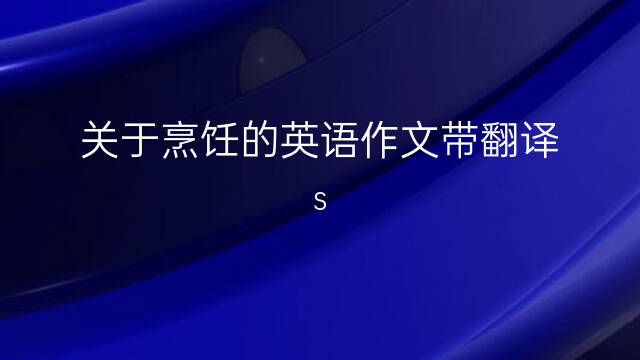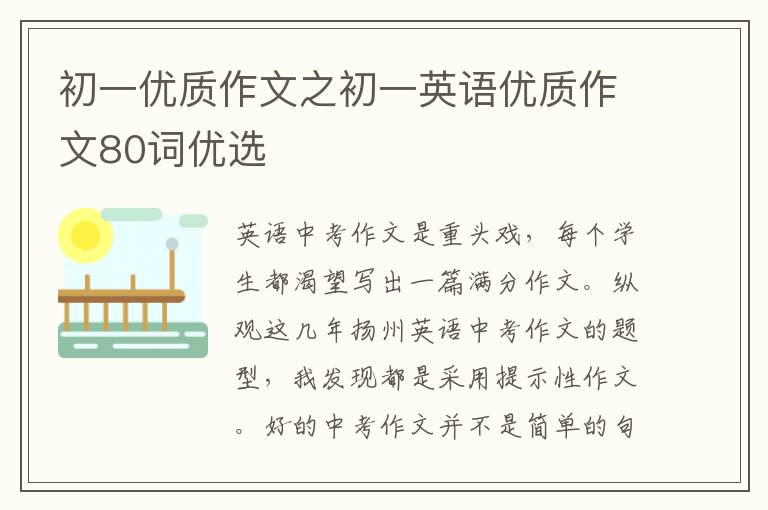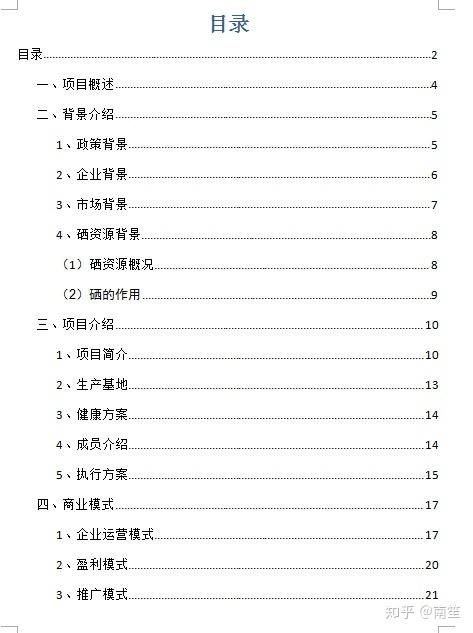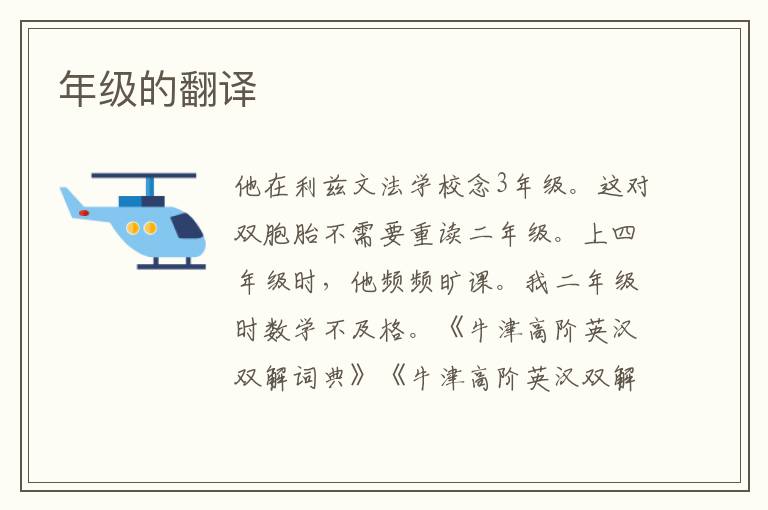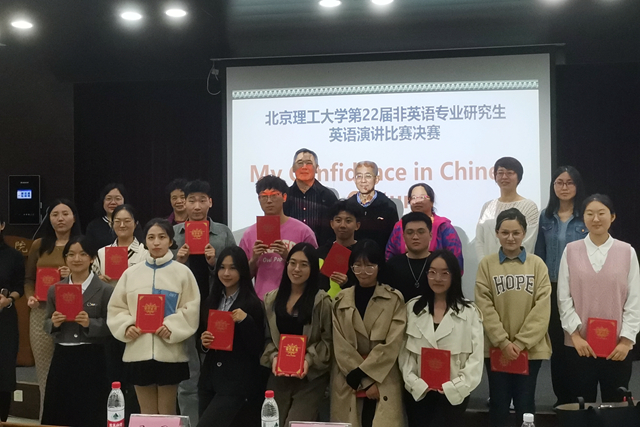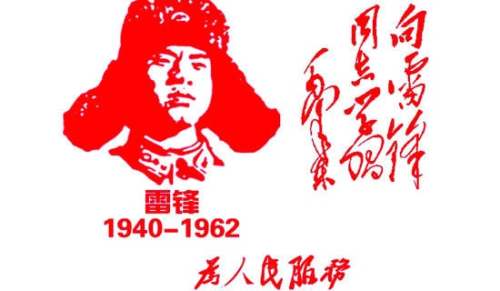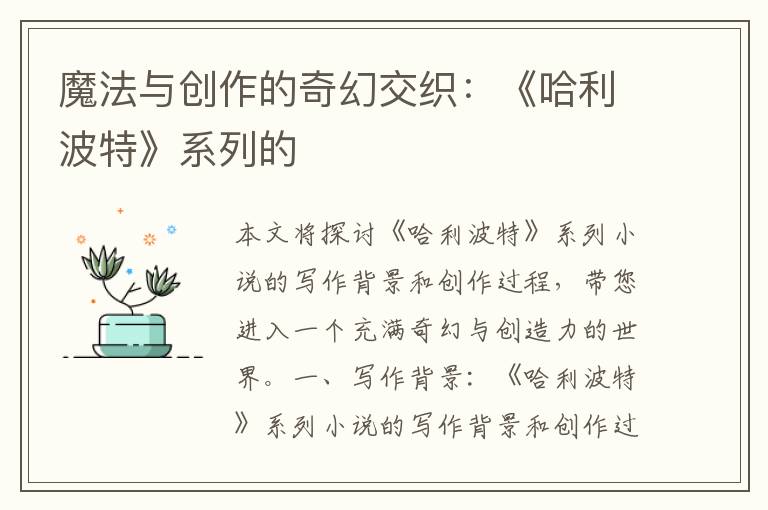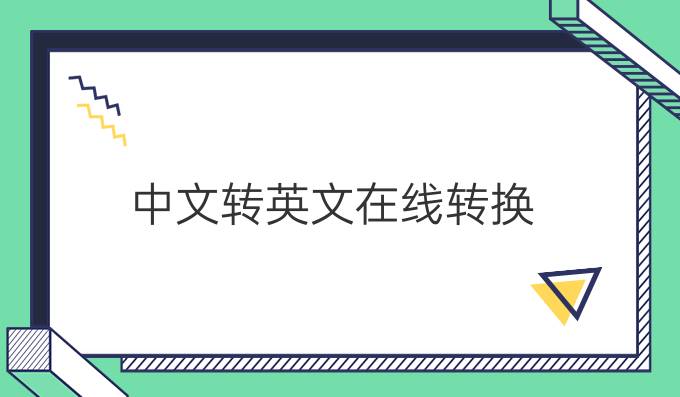英語六級考試快讀閱讀練習及答案(6)

Smartphones
A smartphone is one device that can take care of all of your handheld computing and communication needs in a single, small package. Its not so much a distinct class of products as it is a different set of standards for cell phones to live up to.
Basics of a Smartphone
Unlike many traditional cell phones, smartphones allow individual users to install, configure and run applications of their choosing. A smartphone offers the ability to conform the device to your particular way of doing things. Most standard cell-phone software offers only limited choices for re-configuration, forcing you to adapt to the way its set up. On a standard phone, whether or not you like the built-in calendar application, you are stuck with it except for a few minor tweaks . If that phone were a smartphone, you could install any compatible calendar application you like.
Since cell phones and PDAs are the most common handheld devices today, a smartphone is usually either a phone with added PDA capabilities or a PDA with added phone capabilities. Smartphones can do many things: sending and receiving mobile phone calls, Personal Information Management including notes, calendar and to-do list, communication with laptop or desktop computers, data synchronization with applications like Microsoft Outlook and Apples iCal calendar programs, E-mail, instant messaging , and playing audio and video files in some standard formats.
Future applications promise to be even more impressive. For example, the Nokia 6131 is a phone utilizing near field communication to allow the phone to act as a wireless credit card . The phone uses a two-way communication system to transfer payment information to pads at certain retail stores. Currently, its still in the trial phase of development.
Network Protocols
Smartphones use cell-phone network technology to send and receive data . Developers classify this technology into generations. The first generation includes analog cell phone technology. Digital cell phones require more advanced protocols, which constitute the second generation. Between generation two and three, network engineers created protocols that are more advanced than generation twos digital technology but not so innovative that they are a truly new generation. Developers refer to these protocols as generation 2.5. This generation includes several early smartphone protocols, some of which are still used today.
General Packet Radio Services is a wireless, packet-based communication service and until recently was the standard 2.5G protocol used in most smartphones. Unlike a circuit-switched voice connection, this is a packet-switched, always on connection that remains active as long as the phone is within range of the service. It allows smartphones to do things like run applications remotely over a network, interface with the Internet, participate in instant messenger sessions, act as a wireless modem for a computer and transmit and receive e-mails.
Flexible Interfaces
The core services on smartphones all tie in to the idea of a multi-purpose device that can effectively multitask. A user can watch a video clip, field a phone call, then return to the video clip after the call, all without closing each application. Or he or she can flip through the digital calendar and to-do list applications without interrupting the voice call. All of the data stored on the phone can be synchronized with outside applications or manipulated by third-party phone applications in any number of ways.
Systems supported by smartphones include Bluetooth, a short-range, wireless radio service that allows phones to wirelessly link up with each other and with other nearby devices that support it. This includes things like printers, scanners, input devices, computers and headsets. Some varieties of Bluetooth only allow communication with one device at a time, but others allow simultaneous connection with multiple devices.
Also included is data synchronization(同步), a phone that keeps track of your personal information, like appointments, to-do lists, addresses, and phone numbers, needs to be able to communicate with all of the other devices you use to keep track of those things. There are hundreds of possible platforms and applications you might use for this in the course of a day. If you want to keep all of this data in synchronization with whats on your phone, then you generally have to look for a cell phone that speaks the languages of all of the devices and applications you use. Or you can go out and buy new applications that speak the language of your cell phone.
Then there is Open Mobile Alliance , a collaborative organization with the mission to facilitate global user adoption of mobile data services by specifying market driven mobile service enablers that ensure service interoperability across devices, geographies, service providers, operators, and networks, while allowing businesses to compete through innovation and differentiation. The OMA formed a Data Synchronization Working Group, which is continuing the work begun by the SyncML Initiative. SyncML is an open-standards project designed to eliminate the trouble of worrying about whether your PIM devices sync up with your phone and vice-versa. The project is designed so that any kind of data can be synchronized with any application on any piece of hardware, through any network, provided that they are all programmed to OMA standards. This includes synchronization over the Web, Bluetooth, mail protocols and TCP/IP networks.
SyncML allows data to be synchronized from a phone to PalmOS, Windows, Mac and Linux applications using Bluetooth, infrared , HTTP or a USB cable.
The Future of Smartphones
Smartphones are getting thinner and cheaper, and as a result are entering the consumer market. For the past few years smartphones have been aimed at prosumers, or professional consumers . Prosumers are generally early adopters of products. They have disposable income and great enthusiasm for particular products or technologies. Smartphone developers find prosumers very useful when designing applications and hardware. As prosumers pick and choose the phones that offer the applications they want, developers can tweak designs and move towards mass production. Analysts predict that one billion smartphone handsets will be sold by 2011.
Perhaps the most challenging consideration for the future is security. Smartphones and PDAs are already popular among many corporate executives, who often use their phones to transmit confidential information. Smartphones may be vulnerable to security breaches such as an Evil Twin attack. In an evil twin attack, a hacker sets a servers service identifier to that of a legitimate hotspot or network while simultaneously blocking traffic to the real server. When a user connects with the hackers server, information can be intercepted and security is compromised.
One downside to the openness and configurability of smartphones is that it also makes them susceptible to viruses. Hackers have written viruses that attack SymbianOS phones. The viruses can do things like turning off anti-virus software, locking the phone completely or deleting all applications stored on the phone.
On the other side, some critics argue that anti-virus software manufacturers greatly exaggerate the risks, harms and scope of phone viruses in order to help sell their software.
The incredible diversity in smartphone hardware, software and network protocols restrain practical, broad security measures. Most security considerations either focus on particular operating systems or have more to do with user behavior than network security.
With data transmission rates reaching fast speeds and the incorporation of WiFi technology, the sky is the limit on what smartphones can do. Possibly the most exciting thing about smartphone technology is that the field is still wide open. Its an idea that probably hasnt found its perfect, real-world implementation yet. Every crop of phones brings new designs and new interface ideas. No one developer or manufacturer has come up with the perfect shape or size yet. The next generation smartphone could look like a flip phone, a tablet PC, a candy bar or something no one has conceived of yet.
1. According to the passage, whats the difference between smartphones and traditional cell phones?
A) Traditional cell phones allow users to do things in their own ways.
B) Smartphones allow users to do things in their own ways.
C) Smartphones are more expensive than traditional phones.
D) Smartphones are cheaper than traditional cell phones.
2. What is the function of a smartphone today?
A) It is widely used as call receiver, PIM, and even a credit card.
B) It is widely used as call receiver, PIM, and even a retail store.
C) It is widely used as call receiver, PIM, and even a bank.
D) It is widely used as call receiver, PIM, and communication with computers.
3. Protocols that are more advanced than generation 2s digital technology but not so creative are .
A) generation 2.5
B) generation 3
C) generation between 1 and 2
D) generation out of use
4. What is said about the central services on smartphones?
A) They make it possible for users to do many tasks at the same time.
B) They permit users to do one task at one time.
C) They limit the uses of smart phones.
D) They are changing from single task to multitask for the use of consumers.
5. If a smartphone and a nearby device both support Bluetooth, then the two .
A) can be wirelessly separated
B) ca be wirelessly linked up
C) can be integrated by wire
D) can be recombined by wire
6. Owning to the Data Synchronization Working Group, the data on the phone can be easily synchronized with any applications .
A) if they are of SyncML Initiative
B) if they are of PIM service
C) if they are of TCP/IP networks
D) if they are of OMA standards
7. Prosumers, being choosers and early adopters of products, are helpful in directing the smartphone developers into
A) smartphone sellers
B) smartphone users
C) mass production
D) market promoters
8. Security of smartphones has to be given priority in the future because many executive use them to send __________________.
9. Since feasible security measures are hard to apply to smartphones, security considerations are better turned to __________________.
10. The perspectives for smartohones are limitless, and the next generation smartphone could be of any _______________.
Smartphones
A smartphone is one device that can take care of all of your handheld computing and communication needs in a single, small package. Its not so much a distinct class of products as it is a different set of standards for cell phones to live up to.
Basics of a Smartphone
Unlike many traditional cell phones, smartphones allow individual users to install, configure and run applications of their choosing. A smartphone offers the ability to conform the device to your particular way of doing things. Most standard cell-phone software offers only limited choices for re-configuration, forcing you to adapt to the way its set up. On a standard phone, whether or not you like the built-in calendar application, you are stuck with it except for a few minor tweaks . If that phone were a smartphone, you could install any compatible calendar application you like.
Since cell phones and PDAs are the most common handheld devices today, a smartphone is usually either a phone with added PDA capabilities or a PDA with added phone capabilities. Smartphones can do many things: sending and receiving mobile phone calls, Personal Information Management including notes, calendar and to-do list, communication with laptop or desktop computers, data synchronization with applications like Microsoft Outlook and Apples iCal calendar programs, E-mail, instant messaging , and playing audio and video files in some standard formats.
Future applications promise to be even more impressive. For example, the Nokia 6131 is a phone utilizing near field communication to allow the phone to act as a wireless credit card . The phone uses a two-way communication system to transfer payment information to pads at certain retail stores. Currently, its still in the trial phase of development.
Network Protocols
Smartphones use cell-phone network technology to send and receive data . Developers classify this technology into generations. The first generation includes analog cell phone technology. Digital cell phones require more advanced protocols, which constitute the second generation. Between generation two and three, network engineers created protocols that are more advanced than generation twos digital technology but not so innovative that they are a truly new generation. Developers refer to these protocols as generation 2.5. This generation includes several early smartphone protocols, some of which are still used today.
General Packet Radio Services is a wireless, packet-based communication service and until recently was the standard 2.5G protocol used in most smartphones. Unlike a circuit-switched voice connection, this is a packet-switched, always on connection that remains active as long as the phone is within range of the service. It allows smartphones to do things like run applications remotely over a network, interface with the Internet, participate in instant messenger sessions, act as a wireless modem for a computer and transmit and receive e-mails.
Flexible Interfaces
The core services on smartphones all tie in to the idea of a multi-purpose device that can effectively multitask. A user can watch a video clip, field a phone call, then return to the video clip after the call, all without closing each application. Or he or she can flip through the digital calendar and to-do list applications without interrupting the voice call. All of the data stored on the phone can be synchronized with outside applications or manipulated by third-party phone applications in any number of ways.
Systems supported by smartphones include Bluetooth, a short-range, wireless radio service that allows phones to wirelessly link up with each other and with other nearby devices that support it. This includes things like printers, scanners, input devices, computers and headsets. Some varieties of Bluetooth only allow communication with one device at a time, but others allow simultaneous connection with multiple devices.
Also included is data synchronization(同步), a phone that keeps track of your personal information, like appointments, to-do lists, addresses, and phone numbers, needs to be able to communicate with all of the other devices you use to keep track of those things. There are hundreds of possible platforms and applications you might use for this in the course of a day. If you want to keep all of this data in synchronization with whats on your phone, then you generally have to look for a cell phone that speaks the languages of all of the devices and applications you use. Or you can go out and buy new applications that speak the language of your cell phone.
Then there is Open Mobile Alliance , a collaborative organization with the mission to facilitate global user adoption of mobile data services by specifying market driven mobile service enablers that ensure service interoperability across devices, geographies, service providers, operators, and networks, while allowing businesses to compete through innovation and differentiation. The OMA formed a Data Synchronization Working Group, which is continuing the work begun by the SyncML Initiative. SyncML is an open-standards project designed to eliminate the trouble of worrying about whether your PIM devices sync up with your phone and vice-versa. The project is designed so that any kind of data can be synchronized with any application on any piece of hardware, through any network, provided that they are all programmed to OMA standards. This includes synchronization over the Web, Bluetooth, mail protocols and TCP/IP networks.
SyncML allows data to be synchronized from a phone to PalmOS, Windows, Mac and Linux applications using Bluetooth, infrared , HTTP or a USB cable.
The Future of Smartphones
Smartphones are getting thinner and cheaper, and as a result are entering the consumer market. For the past few years smartphones have been aimed at prosumers, or professional consumers . Prosumers are generally early adopters of products. They have disposable income and great enthusiasm for particular products or technologies. Smartphone developers find prosumers very useful when designing applications and hardware. As prosumers pick and choose the phones that offer the applications they want, developers can tweak designs and move towards mass production. Analysts predict that one billion smartphone handsets will be sold by 2011.
Perhaps the most challenging consideration for the future is security. Smartphones and PDAs are already popular among many corporate executives, who often use their phones to transmit confidential information. Smartphones may be vulnerable to security breaches such as an Evil Twin attack. In an evil twin attack, a hacker sets a servers service identifier to that of a legitimate hotspot or network while simultaneously blocking traffic to the real server. When a user connects with the hackers server, information can be intercepted and security is compromised.
One downside to the openness and configurability of smartphones is that it also makes them susceptible to viruses. Hackers have written viruses that attack SymbianOS phones. The viruses can do things like turning off anti-virus software, locking the phone completely or deleting all applications stored on the phone.
On the other side, some critics argue that anti-virus software manufacturers greatly exaggerate the risks, harms and scope of phone viruses in order to help sell their software.
The incredible diversity in smartphone hardware, software and network protocols restrain practical, broad security measures. Most security considerations either focus on particular operating systems or have more to do with user behavior than network security.
With data transmission rates reaching fast speeds and the incorporation of WiFi technology, the sky is the limit on what smartphones can do. Possibly the most exciting thing about smartphone technology is that the field is still wide open. Its an idea that probably hasnt found its perfect, real-world implementation yet. Every crop of phones brings new designs and new interface ideas. No one developer or manufacturer has come up with the perfect shape or size yet. The next generation smartphone could look like a flip phone, a tablet PC, a candy bar or something no one has conceived of yet.
1. According to the passage, whats the difference between smartphones and traditional cell phones?
A) Traditional cell phones allow users to do things in their own ways.
B) Smartphones allow users to do things in their own ways.
C) Smartphones are more expensive than traditional phones.
D) Smartphones are cheaper than traditional cell phones.
2. What is the function of a smartphone today?
A) It is widely used as call receiver, PIM, and even a credit card.
B) It is widely used as call receiver, PIM, and even a retail store.
C) It is widely used as call receiver, PIM, and even a bank.
D) It is widely used as call receiver, PIM, and communication with computers.
3. Protocols that are more advanced than generation 2s digital technology but not so creative are .
A) generation 2.5
B) generation 3
C) generation between 1 and 2
D) generation out of use
4. What is said about the central services on smartphones?
A) They make it possible for users to do many tasks at the same time.
B) They permit users to do one task at one time.
C) They limit the uses of smart phones.
D) They are changing from single task to multitask for the use of consumers.
5. If a smartphone and a nearby device both support Bluetooth, then the two .
A) can be wirelessly separated
B) ca be wirelessly linked up
C) can be integrated by wire
D) can be recombined by wire
6. Owning to the Data Synchronization Working Group, the data on the phone can be easily synchronized with any applications .
A) if they are of SyncML Initiative
B) if they are of PIM service
C) if they are of TCP/IP networks
D) if they are of OMA standards
7. Prosumers, being choosers and early adopters of products, are helpful in directing the smartphone developers into
A) smartphone sellers
B) smartphone users
C) mass production
D) market promoters
8. Security of smartphones has to be given priority in the future because many executive use them to send __________________.
9. Since feasible security measures are hard to apply to smartphones, security considerations are better turned to __________________.
10. The perspectives for smartohones are limitless, and the next generation smartphone could be of any _______________.


